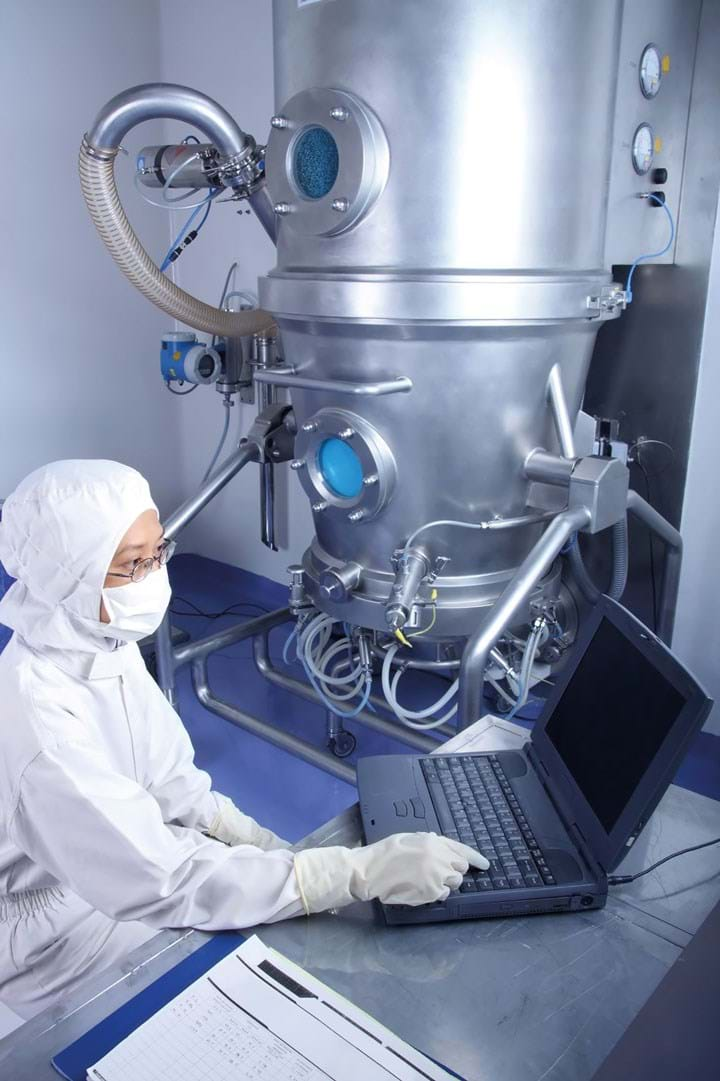Attractive Solutions
Alessandro Viola explains how magnets can filter out metal particle contamination in pharmaceutical manufacturing
METAL particle contamination is a well-known recurring issue in pharmaceutical manufacturing. This is a particular problem when dealing with powders, because the manufacturing equipment required for producing powders often involves mills or other mechanical equipment that may get damaged in time.
One of the hazards of this degradation of equipment is that tiny parts can come off, subsequently contaminating the powder and rendering it useless. In this article, we look at how magnetic filtration is a simple solution that can be applied cost effectively to most processes and save batch contamination.
Introduction
Ferromagnetic materials (such as iron, nickel, cobalt and some rare earth metals) are strongly affected by magnetic fields, while paramagnetic materials (such as aluminum, tin, and magnesium) show a much weaker attraction.
Magnetic filtration is a simple solution that can be applied cost effectively to most processes and save batch contamination
Permanent magnets (AlNiCo) have been manufactured industrially since the 1930s, but common industrial magnets manufactured at the time were able to attract just ferromagnetic materials, while most common metal contaminants in pharma are paramagnetic materials, so they were mostly unsuitable for applications in pharma. Samarium cobalt magnets, developed in the 1960s, were too expensive and delicate for many industrial applications. In the 1980s, neodymium iron boron magnets (or “high intensity” magnets) were developed for industrial applications, effectively opening the door for this technology in many industrial pharmaceutical applications.

The principles of magnetic filtration
Magnetic separation is a physical separation of discrete particles with different susceptibility to a magnetic field, such as minute pieces of (paramagnetic or ferromagnetic) metal in a (non-magnetic) bulk powder. This kind of contamination can be difficult to detect early in the process but can result in whole batches being recalled. For this reason, magnetic filtration can be considered general, end-of-pipe good practice, especially when dealing with bulk powders.
Magnetic filtration can be considered general, end-of-pipe good practice, especially when dealing with bulk powders
Magnets are in fact used in almost every processing industry to remove ferromagnetic and paramagnetic particles, as they can attract and remove particles continuously without having to stop the process. The strength of a magnet is usually measured in two ways (that can of course be correlated by calculation): the pull test, that measures the force required to remove a piece of metal from the magnet, and the use of a Gauss meter which reads the value of the magnetic field. A ferrite magnet produces about 3,000 Gauss (typically adequate to attract ferromagnetic materials), while a high intensity magnet can produce about 13,500 Gauss (suitable for paramagnetic materials as well). Therefore, every metal can be measured.
Recent Editions
Catch up on the latest news, views and jobs from The Chemical Engineer. Below are the four latest issues. View a wider selection of the archive from within the Magazine section of this site.




